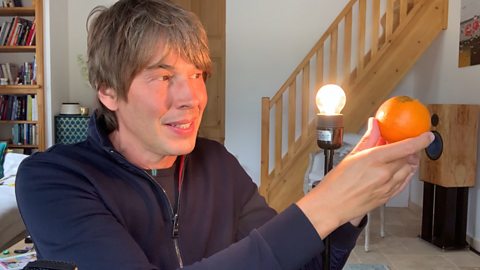What is our solar system?
Well, it's a simple question and, in a sense, it has a simple answer.
Now, a solar system is the collection of objects that orbits around the sun, that orbit around our star.
But there is, of course, a more detailed answer. To answer it properly we have to say what those objects are.
Now, clearly, there are the 8 large planets. Starting from the inside, we have Mercury, and then Venus, and then Earth, and then Mars, then a belt of rocky, small objects called the asteroid belt, followed by Jupiter, Saturn, and Uranus and Neptune. So 8 planets with the asteroids in between Mars and Jupiter.
Then, beyond the orbit of Neptune there are countless smaller objects. We call them dwarf planets, of which Pluto is an example. We used to think Pluto, or call Pluto, a planet but subsequently we discovered many objects of a similar size out there beyond the orbit of Neptune and so we reclassified Pluto as a dwarf planet.
Beyond the dwarf planets, there's a region called the Kuiper Belt which is a collection of billions of smaller, icy objects. The Kuiper Belt is one of the regions from which comets are sometimes deflected in to the inner solar system.
And then beyond that, there's a huge halo of icy objects called the Oort Cloud. Again, a region from which many comets appear, which we think extends out, we think perhaps, as far as a light year into space, so perhaps a quarter of the way to the nearest star, Proxima Centauri.
This video gives an overview of the solar system, describing the collection of objects that orbit around the sun, our star.
As well as naming the planets and their relative order from the sun, other components of the solar system are considered, including the asteroid belt, the dwarf planets, and beyond to the Kuiper Belt and Oort Cloud.
This information goes beyond what is required for the curriculum but should inspire and engage students in the topic.
As with other clips in the series, the idea of space physics as an evolving science is suggested.
Teacher notes
Points for discussion
- Students should have learned about the solar system in primary school, including the names and order of the planets from the sun. This film would be a useful way of revisiting that as a starting point at KS3, while also acting as a good hook for the new topic.
Suggested activities
This video would be a useful introduction to a topic on space physics at KS3.
It might be useful to follow this video with the video 'Moons in the solar system' in this series as it defines what a moon is, and how to differentiate between moons and planets.
Curriculum information
Suitable for KS3 England, Wales and NI and CfE Scotland, S1-3, and Cambridge IGCSE Physics.

Why do we have days, nights and seasons? video
A demonstration, using everyday objects, of how the Earth moves to give us days and nights, and seasons.

Why do astronomers use 'light years' to measure distance in space? video
A short explanation of ÔÇÿlight yearsÔÇÖ and why scientists use them in place of standard units of measurement when talking about space.

What is the Milky Way? video
A description of the Milky Way and its components, including stars, dust, gas and the mysterious ÔÇÿdark matterÔÇÖ.

Moons in our solar system. video
A short description of moons in the solar system including what differentiates a moon from a planet.
